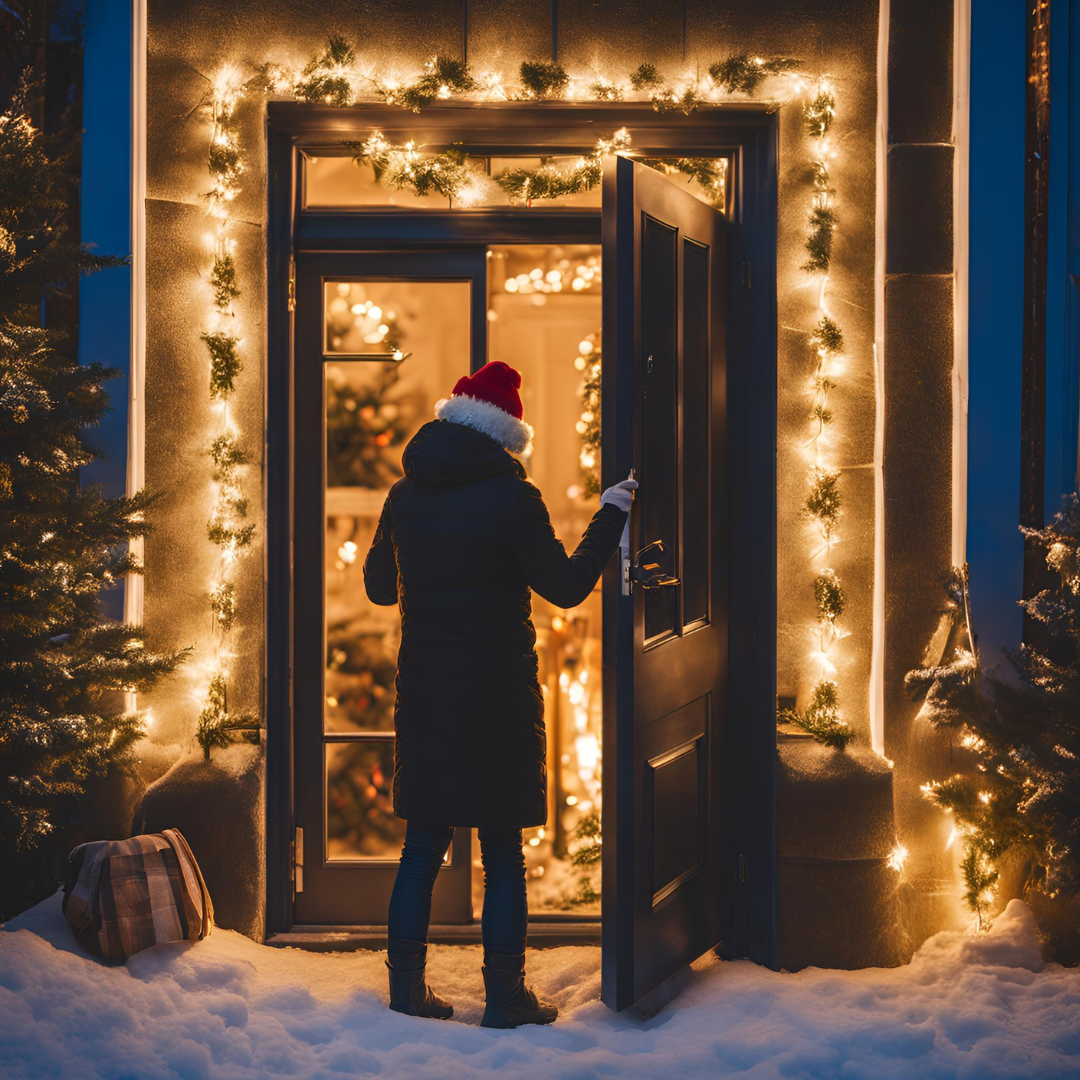The “first-foot” is believed to bring luck for the coming year, but not just any visitor qualifies—there are specific traditions and superstitions tied to it.
Key Aspects of First-Footing:
- Who is the First-Foot? Traditionally, the ideal first-foot is a tall, dark-haired man. This superstition dates back to times when a visit from a fair-haired stranger, especially a Viking, might be seen as a bad omen. A tall, dark man was thought to bring the best luck to the household.
- Gifts and Offerings: The first-foot usually brings symbolic gifts to ensure good fortune for the year ahead. Common items include:
- Coal: For warmth and a wish for the household to never go cold.
- Shortbread or Black Bun: For food and prosperity.
- Whisky: For good cheer and to toast the new year.
- Entering and Leaving: The first-foot should be the first person to cross the threshold after midnight and should enter through the front door. Some traditions also dictate that they should leave through a different door.
- Bringing Good Luck: The first-foot is expected to be a harbinger of good luck for the family in the coming year. Some families take the tradition very seriously, carefully choosing who will be their first visitor.
Regional Variations:
While the tradition is widespread across Scotland, different regions may have variations. In some places, women can act as the first-foot, though this is traditionally less common. In others, it’s believed that bringing bread or a silver coin can symbolize financial prosperity.
Modern Times:
First-footing remains a popular tradition in Scotland today, especially in rural areas and among families that hold on to Hogmanay customs. It’s often followed by gatherings, where neighbours and friends visit each other, share a dram of whisky, and celebrate the new year together.
The tradition of first-footing beautifully combines superstition, hospitality, and community spirit, making it a cherished part of Scottish New Year’s celebrations.


